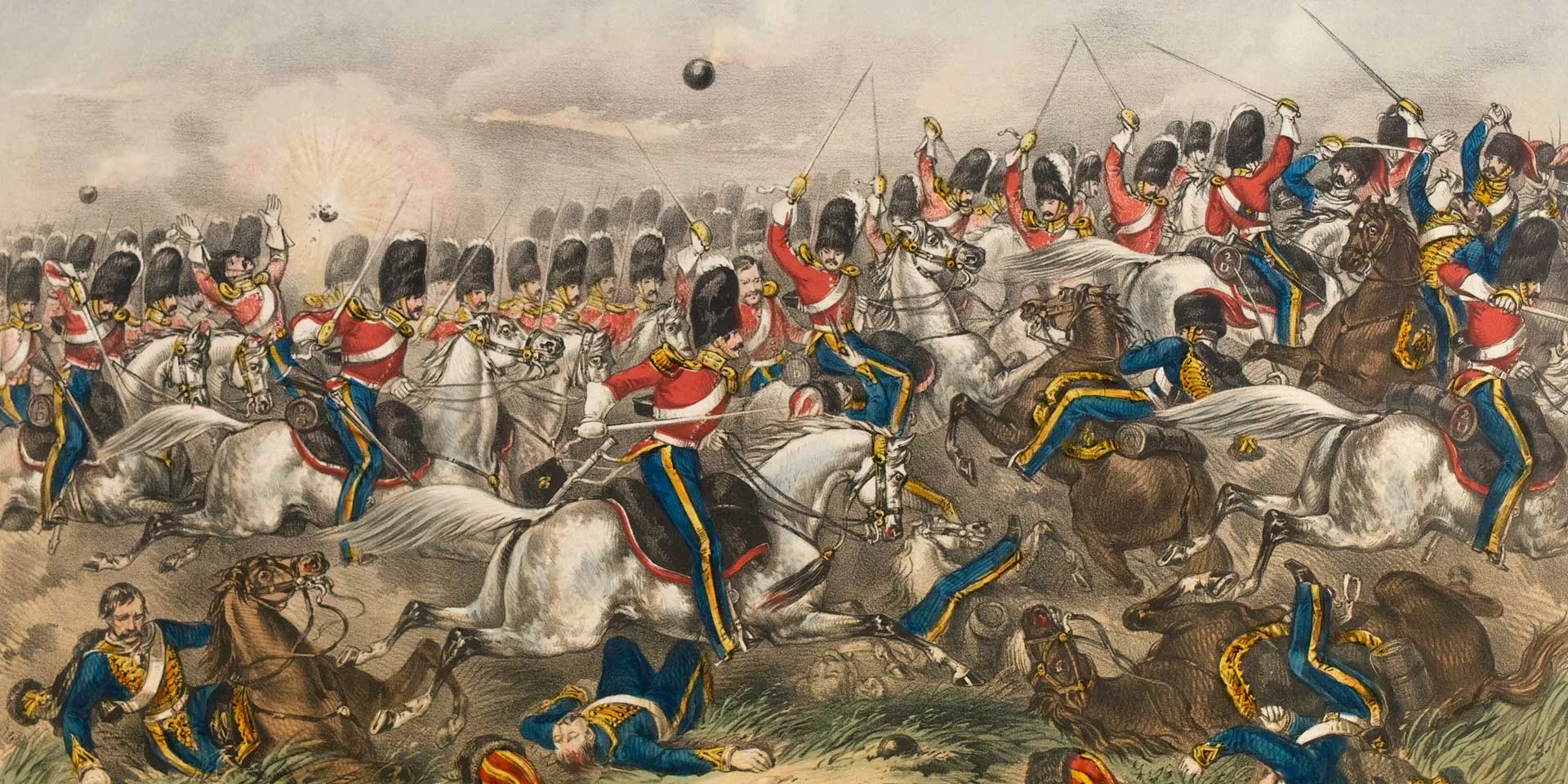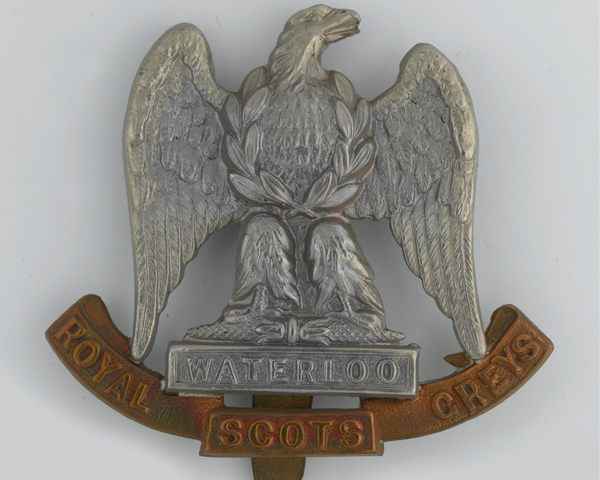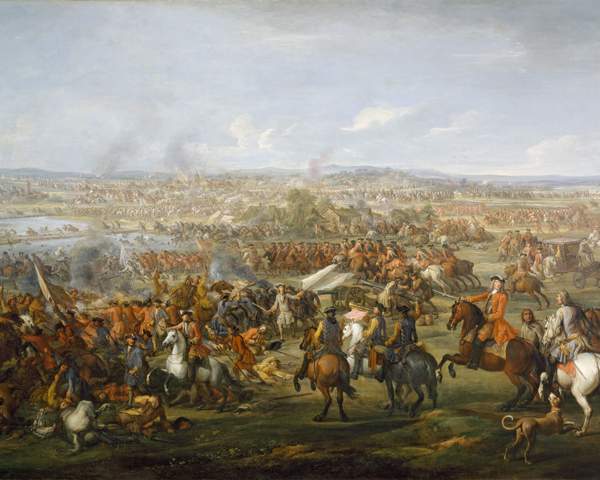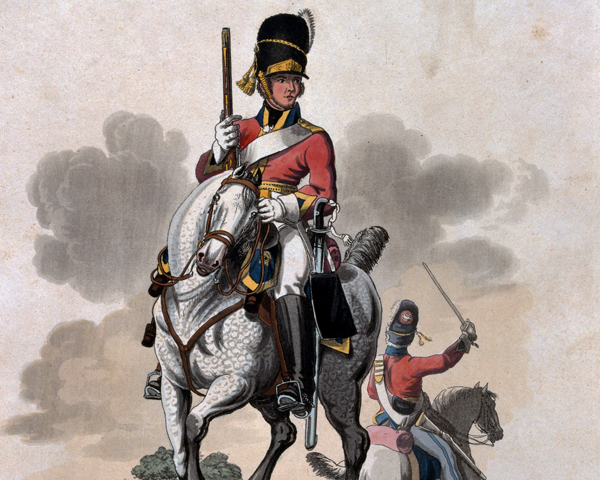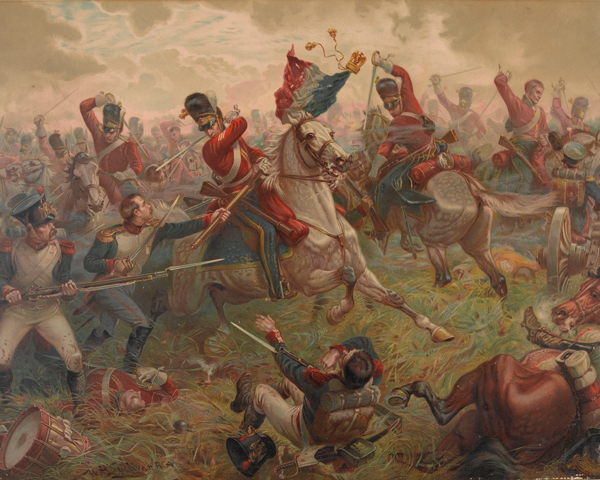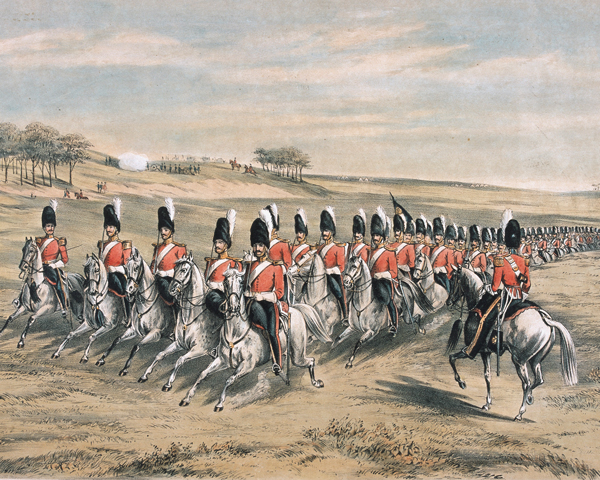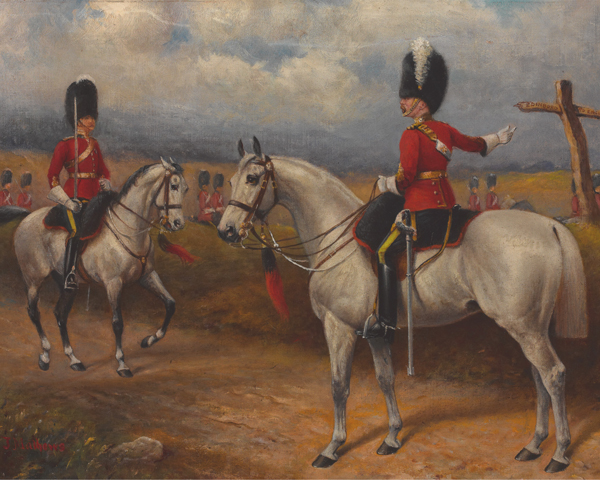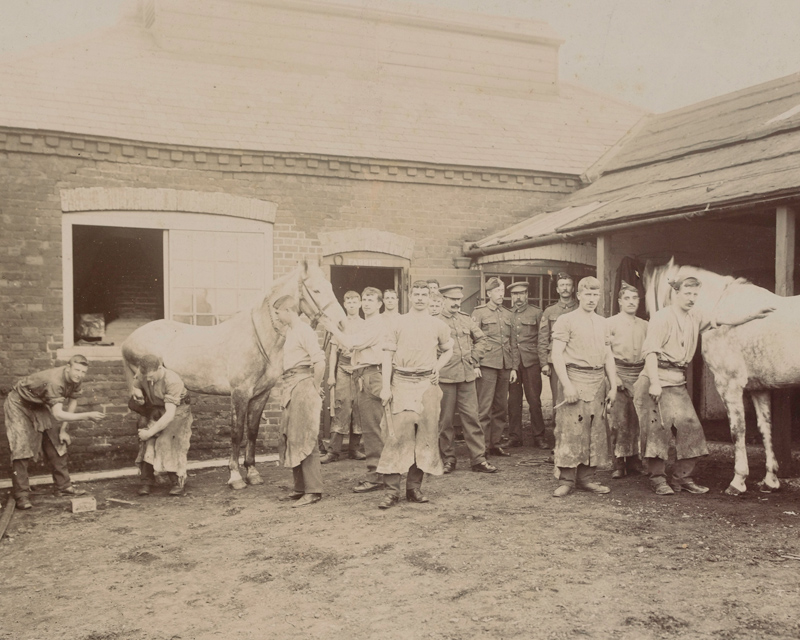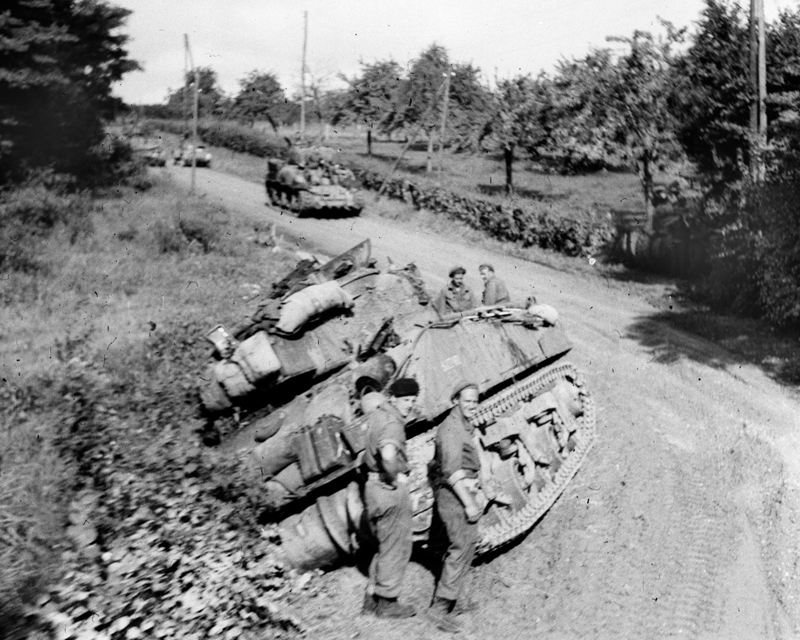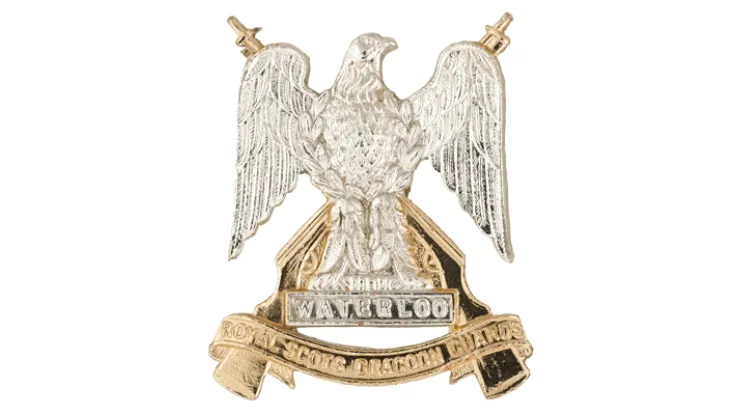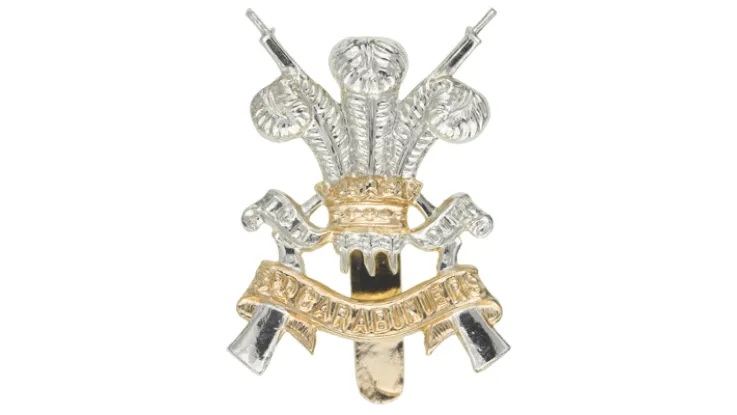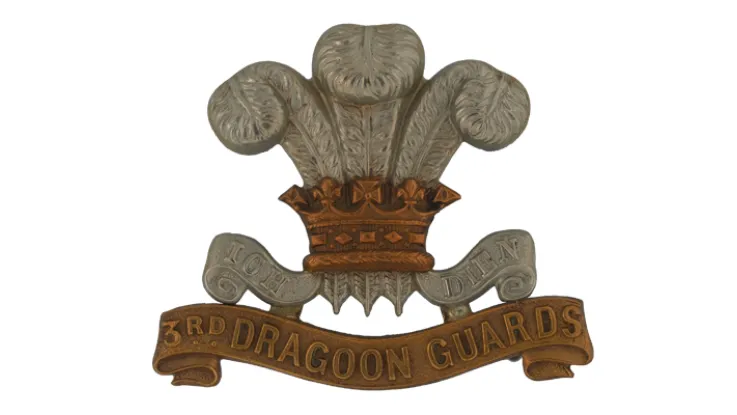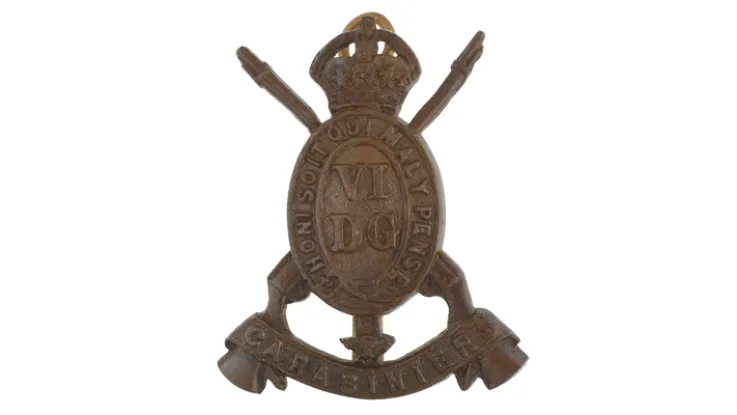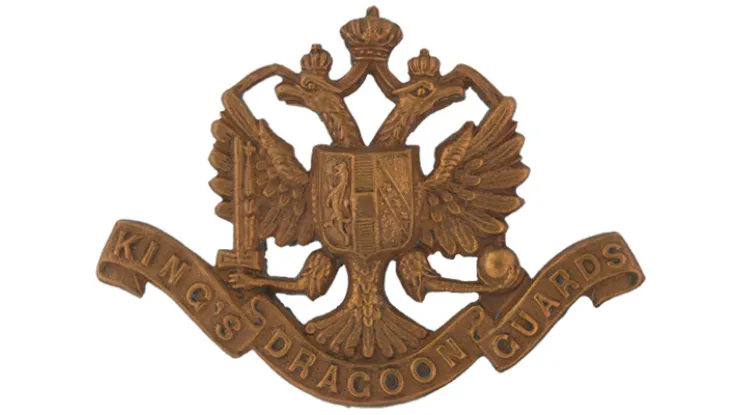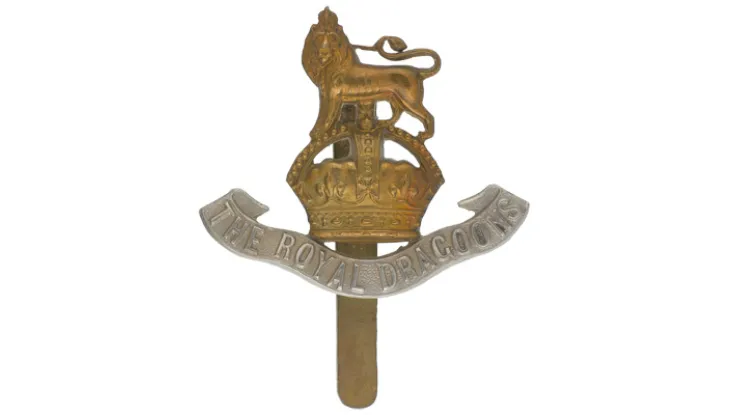Origins
The regiment was formed as The Royal Regiment of Scots Dragoons in 1681 from a number of existing troops of cavalry. Its first action was the suppression of the Earl of Argyll’s rising, launched in 1685 in support of the Duke of Monmouth’s revolt.
Following the 'Glorious Revolution' (1688), the regiment went over to King William III, fighting for him against the Jacobites in Scotland. It was ranked as the 4th Dragoons in 1692.
The following year, the entire regiment attended a royal inspection in London mounted on ‘greys’ (horses with white or dappled-white hair). This gained it the nickname ‘Scots Grey Dragoons’. However, this only became part of its official title in 1877, when it was renamed the 2nd Dragoons (Royal Scots Greys).
Following its royal inspection, the regiment fought in Flanders during the Nine Years War (1689-97).
Early campaigns
After a period of home service, it joined the War of the Spanish Succession (1702-13). The regiment fought at Schellenberg (1704), Blenheim (1704), the Passage of the Lines of Brabant (1705), Ramillies (1706), Oudenarde (1708), Tournai (1709), Malplaquet (1709) and Bouchain (1711).
Soon afterwards, the regiment was re-ranked as the 2nd Dragoons in the new combined English and Scottish cavalry order of precedence. Garrison duties in Scotland followed until 1715, when it helped suppress the First Jacobite Rebellion, fighting at Sheriffmuir.
It spent a further period on home service until 1742, when it joined the War of the Austrian Succession (1740-48). The regiment deployed to Germany first, fighting at Dettingen (1743). It then moved to Flanders, where it served at Fontenoy (1745), Rocoux (1746) and Lauffeld (1747).
Late 18th century
During the Seven Years War (1756-63), detachments from the regiment joined amphibious raids on the French coast. Meanwhile, the bulk of the regiment moved to Germany in 1758, where it fought at Bergen (1759), Minden (1759), Warburg (1760) and Villinghausen (1761).
It saw no further active service until the campaign in the Low Countries from 1793 to 1795, early in the French Revolutionary Wars (1793-1802). This included the Battle of Willems (1794).
19th century
It did not fight again until the Battle of Waterloo (1815). This was its only Napoleonic battle honour, at which 201 of its men and 228 of its horses were killed attacking a French infantry brigade. In this attack, Sergeant Charles Ewart captured the French 45th Line Infantry Regiment’s eagle. This later became part of the unit’s cap badge.
A long period of home service followed until the Crimean War (1854-56). There, the regiment won two Victoria Crosses charging uphill against 3,000 Russian cavalry at Balaklava (1854).
On returning home, it saw no further active service until the Boer War (1899-1902) in 1899. During this campaign, it camouflaged its white horses with khaki dye.
It took part in the Relief of Kimberley, fighting at Paardeberg (1900), before joining the advance to Bloemfontein and later Pretoria, service that included the Battle of Diamond Hill (1900). It also fought in the anti-guerrilla campaign in 1901-02.
First World War
After returning home in 1905, the Scots Greys stayed in Britain until August 1914, when it moved to France.
It fought on the Western Front as both cavalry and infantry, winning several battle honours including the Retreat from Mons (1914), Marne (1914), Ypres (1914), Neuve Chappelle (1915), Arras (1917) and Amiens (1918).
During the inter-war years, it served at home. But it also deployed to India in the 1920s and Palestine in the 1930s, where it helped suppress the Arab Revolt (1936-39).
Second World War
The regiment remained in Palestine during the early years of the Second World War (1939-45). It retained its horses until 1941, when it became a motorised unit - the last British cavalry unit to do so.
It then fought in Syria (1941), before being re-equipped with tanks and moving to North Africa. There, it fought at the Second Battle of El Alamein (1942) and El Agheila (1942).
In September 1943, the Scots Greys joined the Italian campaign. It remained there until January 1944, when it returned home to prepare for D-Day.
It landed at Juno Beach on 7 June 1944, going on to fight at Caen (1944) and Falaise (1944), before taking part in Operation Market Garden (1944) and the Allied drive into Germany.
Post-war
From 1945 until 1962, the regiment alternated between service in Germany with the British Army of the Rhine and at home stations, aside from a brief deployment in Libya during 1952.
In 1962-63, it deployed to Aden during the Emergency (1963-67). But, later the following year, it returned to Germany until 1969 when it transferred to Scotland.
Legacy
It was still in Scotland in 1971, when it was amalgamated with the 3rd Carabiniers (Prince of Wales’s Dragoon Guards) at Edinburgh to form The Royal Scots Dragoon Guards (Carabiniers and Greys).
Regimental museums
The National Army Museum works with a network of Regimental and Corps Museums across the UK to help preserve and share the history and traditions of the Army and its soldiers.
Discover more about The Royal Scots Greys by visiting the Royal Scots Dragoon Guards Museum at Edinburgh Castle.

